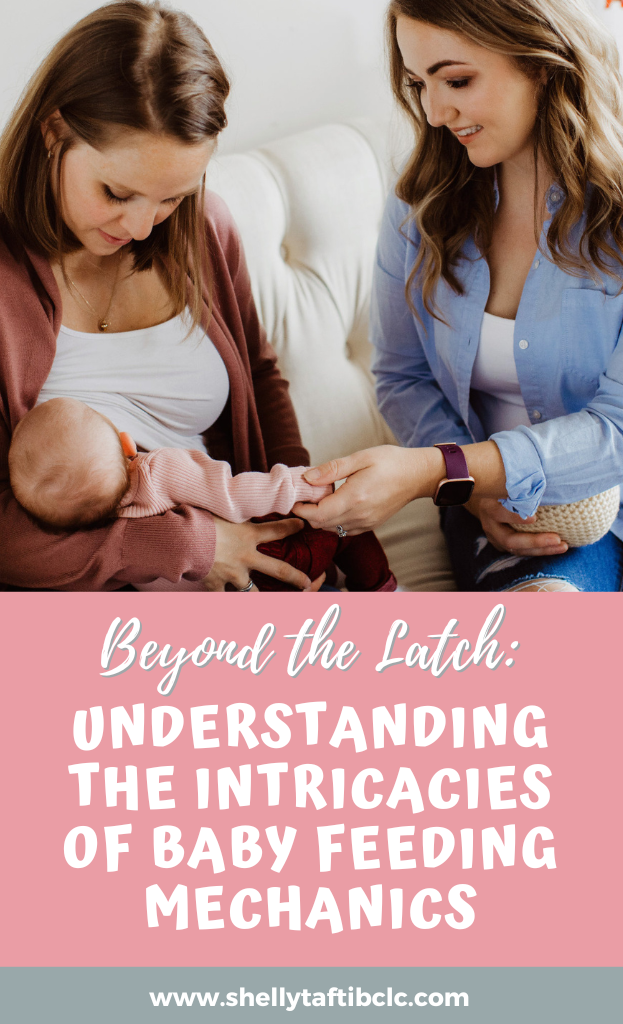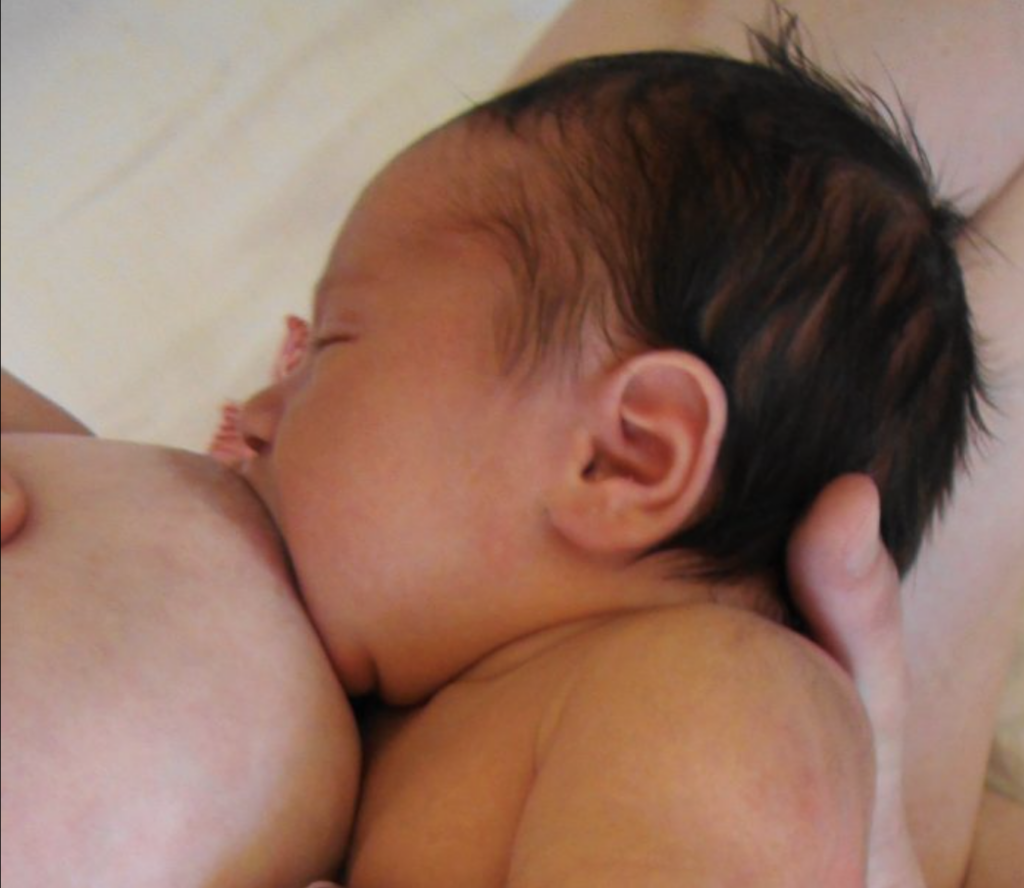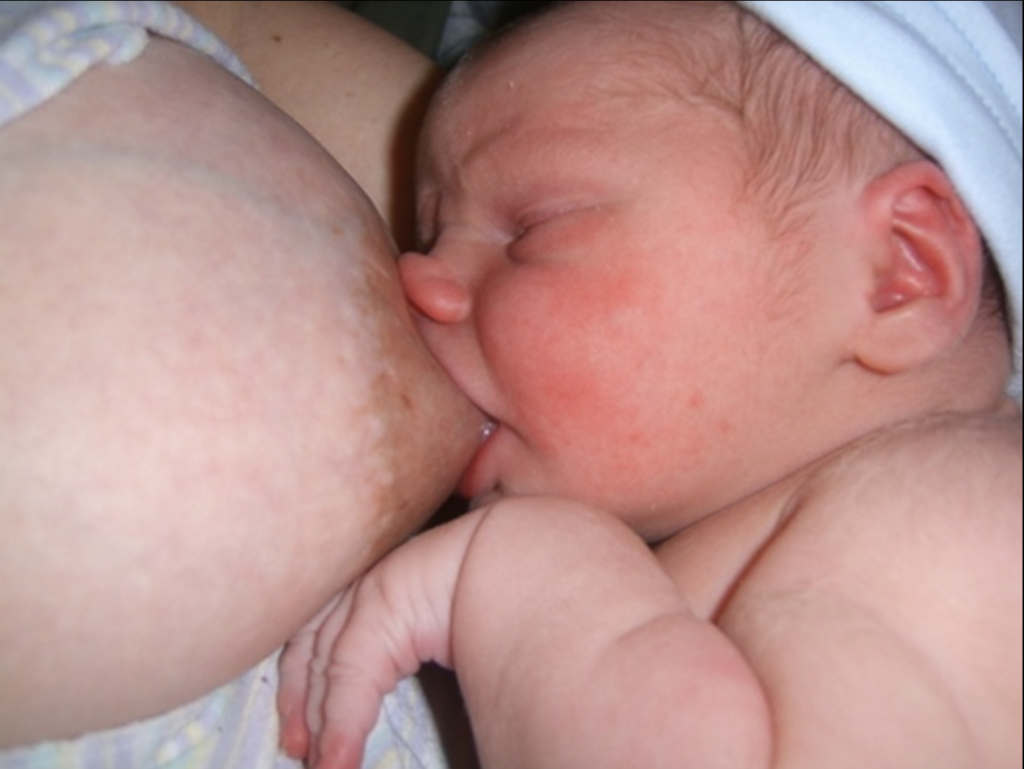Understanding the Intricacies of Baby Feeding Mechanics

Going Beyond the Latch
Many times when I am working with new families, for baby feeding they tell me that they don’t understand why it hurts to breastfeed because they’ve been told so many times that their baby’s latch “looks good”. I’ll never forget one mother, with tears in her eyes, say “I must be doing something wrong. It hurts so much, but I know she has a good latch because everyone has told me so.”
If you are finding yourself in a similar situation in baby feeding, please don’t blame yourself. It’s not your fault! There are many providers and lactation professionals that do not recognize what really needs to happen when breastfeeding – and why breastfeeding is way more than a “good latch!”
What makes a latch “good”?
When babies are latched to the breast, on the outside a latch looks good if it is wide enough to encompass not only the nipple, but also the area around the nipple. The upper and lower lip should be flanged, and the cheeks nice and round and against your breast.
A good latch shouldn’t hurt. A shallow, or narrow, latch will be painful and will result in nipple damage.
Here is an example of a good latch:

Good latch. Source credit: Dr. Jack Newman, International Breastfeeding Centre1
Here is an example of a poor latch:

Good latch. Source credit: Dr. Jack Newman, International Breastfeeding Centre
In order to achieve a wide latch, place your nipple just under the baby’s nose, and wait for them to open wide. Then, move them up and over the nipple to latch on.
How a latch looks can be very important and tells us a lot about how the baby is feeding at the breast, but it’s not the only story we need to look at.
Other Factors That Impact Baby’s Feeding At The Breast
Now that we understand what a good latch looks like, and that it is important for both the breastfeeding/chestfeeding parent’s comfort and your baby’s ability to transfer milk to the breast, let’s look at other factors that can impact your baby’s breastfeeding skills.
Tongue movement: As your baby latches to the breast, they should extend their tongue over their lower gumline and prepare to cup the nipple. They will draw the nipple back into their mouth, waaayyyy back to their soft palate. Then, with the tip of the tongue stabilizing the nipple in their mouth, they start to make a wave with their tongue. As the back of the tongue rises and then drops, it creates a vacuum that pulls the milk from the breast.
If a baby is unable to extend their tongue at least over their lower gumline (ideally they will extend it past their lips), and cannot make that wave with their tongue, then the latch can be painful and they can have trouble pulling milk from the breast.
Jaw movement: When your baby starts to suckle at the breast, and make the wave with their tongue, their jaw works together with their tongue to create suction and to swallow. The jaw rises to help create negative pressure in their mouth, and drops during the creation of negative pressure (suction). There should be a slight pulse forward of the jaw during this process, and the jaw movement should be smooth, not jerky.
But what happens if baby’s tongue isn’t moving properly for the jaw to follow? What if the baby’s jaw is tight and they have difficulty open wide? What if their jaw is asymmetrical and doesn’t move correctly on one side? Well, then it doesn’t matter what the latch looks like, the jaw mechanics are off and it can lead to nipple pain and make it harder for the baby to latch and pull milk from the breast.
Cheeks and lips: When your baby is at the breast, their lips should rest completely but gently on your breast. The upper lip should be neutral to flanged, with the lower lip flanged. The lips work to help stabilize the nipple in the mouth and create a seal around the breast. The lips should not be gripping the breast, moving around, or bunching.
Babies have full, rounded fat pads in their cheeks that also stabilize the nipple in the parent’s mouth.
So what happens if the baby doesn’t have full fat pads in their cheeks, like with many premature babies? What happens if they have a lip tie, or tightness along their lips? Or their lips are asymmetrical? I will often see a baby latch with pursed lips when this happens, with their cheeks dimpled back – almost like they are sucking on a straw. As you have probably already guessed, this can create pain while feeding and make it harder for baby to pull milk from the breast.
Okay, I get why my baby’s latch still hurts, even if it looks good. Does this mean I can’t breastfeed? Now what?
You can! All of the issues mentioned above are speed bumps on a breastfeeding/chestfeeding journey, not brick walls. There are things we can do to help your baby use their tongue, jaw, lip, and cheeks better at the breast and improve your feeding experience. But you’ll need support – connect with an IBCLC who can assess your baby and how they feed at the breast, and work with you to correct any issues that are causing you pain.
Need support? I offer in person and virtual infant feeding and sleep consults.

